This post may contain affiliate links. If you make a purchase through a link, I may receive a small commission, at no cost to you. These commissions help keep this website up and running, and I thank you for your support. Read my full disclosure here.
You’re reading this post because you’re exactly where I once was… realising that you have a very dirty washing machine. My moment was when I found little black bits all over my washing when I took it out of the machine. When I further investigated, I discovered it was coming from black mouldy scum which was lining my washing machine drum.
Washing machines get dirty and mouldy for a variety of reasons including:
- limescale (if living with hard water) which also causes soap scum
- laundry detergent residue
- using fabric softener, which can leave a sticky residue
- low water temperature used in wash cycles
- the type of cycle and detergent you use
These problems can cause damage to your washing machine, leading to breakdowns and ultimately reducing the life of the appliance. For example, limescale can build-up on the heating element, causing it to fail. It can also cause problems for the drums, pipes, and hoses which may lead to breakdowns and flooding.
Just like you, I went online to figure out how I could clean it. I spent a lot of time trying out the various methods which promised to fix it. But I found a lot of them didn’t work because they are only suitable for regular maintenance type cleans not the deep cleaning I really needed for my very dirty washing machine. So, in this post I am going to be honest and tell you what does and what doesn’t work.
What Products Don’t Deep Clean a Washing Machine
Vinegar and Baking Soda
Everyone loves to promote cleaning with vinegar and baking soda, and I still think it has its place in your cleaning cupboard. But does vinegar and baking soda deep clean your washing machine? Not really. Both are safe to use and help to remove limescale. The baking soda also deodorizes. Vinegar and baking soda are OK at giving your machine a maintenance clean, but neither of them are very effective at killing mould and removing soapy residue. Vinegar is acetic acid, but it’s only a mild form of acid, so will not kill all the mould. Similarly, baking soda is used only for mild mould infestations. If vinegar and baking soda are used together, after a brief eruption of bubbles you’re basically left with water – so not very effective! This post does a better job than me to explain why you shouldn’t mix them.
Chlorine Bleach
Chlorine bleach is a popular cleaning product, but it doesn’t remove limescale and must be used with caution. When used with hot water it gives off more chlorine fumes due to the steam vapour which is dangerous to inhale. It also can’t be mixed with other products otherwise you risk creating toxic fumes that can seriously harm or kill you within minutes. Although it’s great at removing mould from smooth services like tiles and glass, it can’t penetrate porous surfaces. Therefore, it isn’t very effective at removing mould from the washing machine’s plastic or porcelain enamel inner drum. Although you may not see the mould anymore, remnants remain which will quickly regrow.
How to Deep Clean Your Washing Machine: Methods That Work
Now I’ve explained what doesn’t work, I am now going to cover two methods which will give your washing machine a deep clean. However, if the washing machine has a build-up of limescale, scum and mould, the problem may not be resolved the first time, and you may need to continue to clean it several times before you see an improvement.
Method 1: Citric Acid
Citric acid is derived from citrus fruits and is a much stronger acid than vinegar. It is a very effective natural cleaner that removes limescale, rust, soap scum, and buildup. It also kills bacteria, mould, fungus, and mildew.
(Please note: Citric acid has corrosive properties and should not be used on natural stone or marble).
How to Deep Clean Your Washing Machine With Citric Acid
Dosage: 1 cup/250ml of citric acid
Front loader washing machine
- Set the water temperature to 60ºC (140ºF)
- Add 1 cup of citric acid into the drum of the machine.
- Begin the wash cycle.
Top loading machine
- Set the water temperature to 60ºC (140ºF) and start the wash cycle.
- Wait until the machine has filled with water, then add 1 cup of citric acid into the drum.
- Let the machine agitate for 1 min to combine then stop the cycle and soak for one hour before letting the cycle finish.
Method 2: Hydrogen Peroxide
Hydrogen peroxide removes limescale, kills mould, and is anti-viral and anti-bacterial. It is also safe for the environment as it breaks down into oxygen and water. However, hydrogen peroxide takes longer to work, so you’ll need to leave it soaking in your machine for at least three hours. As this is not possible for front loaders, you may need to run two cycles.
Please note: Hydrogen peroxide is sold as a household cleaning product as a 3% diluted liquid solution. It is sold in higher concentrations but DON’T purchase these products, as they are used by commercial cleaners who dilute it to make large quantities of cleaning solution. Don’t try doing this yourself because there are safety risks when handling solutions above 3%. In addition, hydrogen peroxide must be used within a year of opening and stored in a dark place, otherwise it loses its effectiveness.
How to deep clean your washing machine with Hydrogen Peroxide
Dosage: Use 1 litre/1 quart of hydrogen hydroxide (3% dilution).
Front loader washing machine
- Set the water temperature to 60ºC (140ºF).
- Pour the hydrogen peroxide into the drum of the machine and begin the wash cycle.
- Add an additional rinse cycle to ensure all traces of peroxide are removed.
Top loading machine
- Set the water temperature to 60ºC (140ºF) and start the wash cycle.
- Wait until the machine has filled with water then add the hydrogen peroxide. Let the machine agitate for 1 min to combine then stop the cycle and soak for at least three hours before finishing the cycle.
- Add an additional rinse cycle to ensure all traces of peroxide are removed.
How to Deep Clean Your Washing Machine Components
How to Clean a Front Loader Washing Machine Gasket
Pack the rubber folds and cavities of the gasket with paper towels soaked in hydrogen peroxide or citric acid. Leave it to soak for a few hours before wiping down clean and dry. You may need to use a soft brush to gently scrub it.
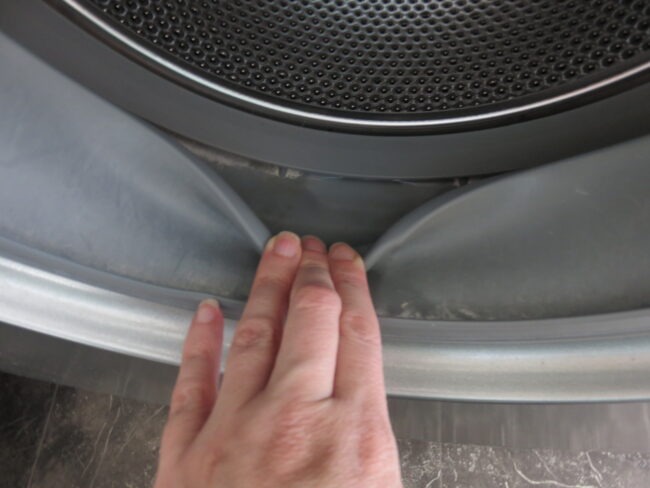
How to Clean a Washing Machine Top Loader Rim
Use a paper towel soaked in hydrogen peroxide or citric acid to wipe around the opening of the machine. Try and get between the tub rim and top edges, and all the areas that the water can’t get to.
How to Clean a Washing Machine Dispenser
Remove the dispensers from the machine. Fill your sink with hot water and ½ cup of hydrogen peroxide or ¼ cup of citric acid and scrub away. Don’t forget to also clean inside the area where the dispenser sits as this can become mouldy too. If the dispenser can’t be removed (check your machines manual), then use a pipe cleaner or an old toothbrush to get into the crevices.

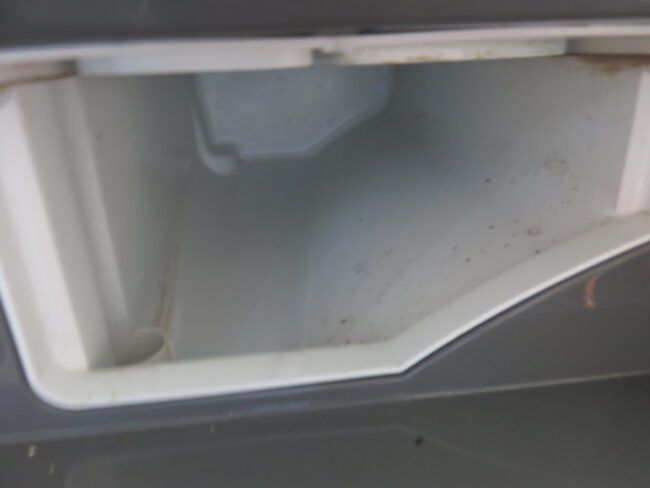
How to Clean the Washing Machine Filter
Refer to your washing machines instruction booklet on how to open and clean out the filter. If you have lost the manual, you should still be able to find a downloadable version online by searching the model number and user manual.
Front loader washing machine
The filter door is usually located at the bottom front of the washing machine, although I have had a washing machine where it was located at the back, which was most inconvenient! Typically, you can open the filter access door with a coin or screwdriver. Place a towel underneath the door to protect the floor and place a shallow dish on top of the towel to catch the water. There is usually a tube with a cap that plugs it up. Remove the plug and drain the water out of it. After the water has been removed, open the filter cap and remove anything that may be trapped in the filter.
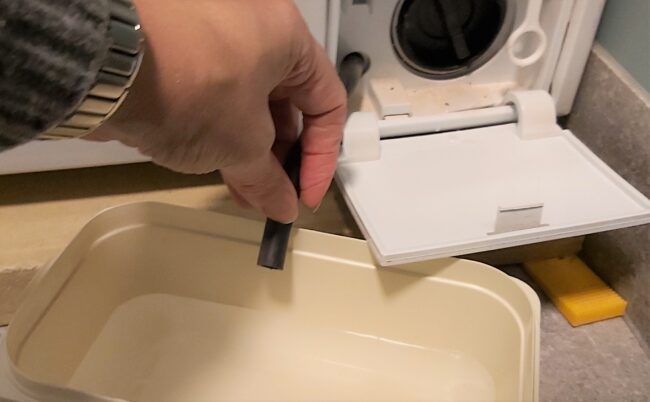
Top loader washing machine
For top loaders, they are usually found on the top of the agitator (the middle piece of the drum that you usually put the detergent down). Remove the filter and clean it out. When you remove the filter completely, you may find various objects that need to be dislodged, such as hair, coins, keys, or lint.
Once the objects are removed, run the filter under water and use soap and a toothbrush if necessary to remove any debris. If the filter is extremely clogged or dirty, soak and scrub it with soap.
Washing Machine Maintenance: How to Keep Your Washing Machine Clean
Now that you have made the effort to deep clean your washing machine, I recommend giving it a maintenance clean once a month using the methods described above. Alternatively, an easy way to do this is to use a commercial cleaner such as Lemi Shine Washing Machine Cleaner. It is specially designed to remove tough limescale and detergent build up.
Other tips to maintain your washing machine include
- Leaving the door open between washes to help the machine dry out and prevent mould and fungus growth
.
- If you regularly cold water wash, then look to occasionally run a regular hot wash of 60ºC (140ºF). I take the opportunity to hot wash my bedding or towels so I’m not running an empty cycle. A hot wash can benefit towels and sheets by more easily removing body oils residue.
- Don’t over dose with your washing machine. Follow the manufacturer instructions.
- Use a laundry detergent that contains grease-eating enzymes, such as Amylase, Protease, Lipase, or Mannanase. In the UK and Europe these detergents are often referred to as biological detergents. If you are unsure, check the label or the manufacturer’s website for the list of ingredients or use Seventh Generation laundry detergent which contains these enzymes. But don’t use this detergent to wash wool or silk because these materials are proteins. The protease enzyme in the detergent, which helps remove food stains, doesn’t understand the difference between the food stain and wool/silk, so can end up causing small holes in your garments. For these items use a non-biological detergent specially designed for these materials such as Woolite Delicates. Learn more about the difference between the biological and non-biological laundry detergents here.
How to Tackle  Persistent Bad Washing Machine Smells
Persistent Bad Washing Machine Smells
If your machine continues to smell bad after using these methods, it may indicate other problems that need to be resolved. I have written a dedicated post on how to identify what is causing the smell in your washing machine and how to fix it.

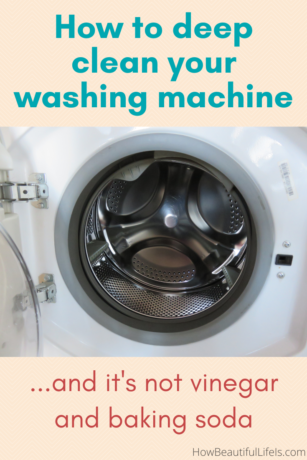
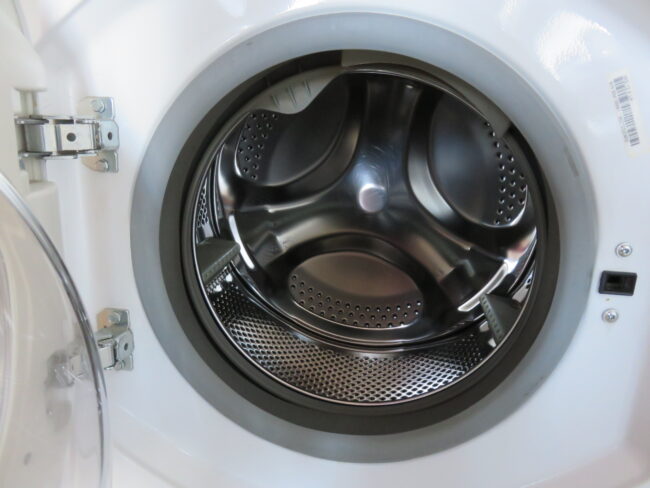

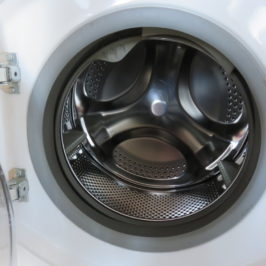
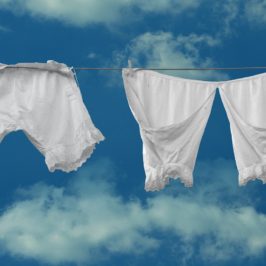
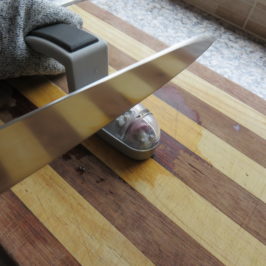
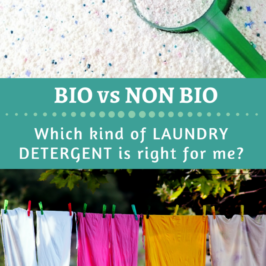
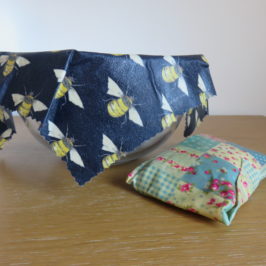
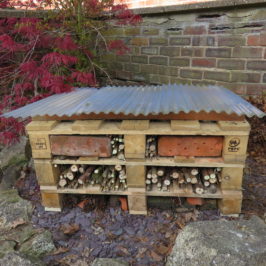
harold D tabit
I typed in how to clean grease from inside your washing machine. that don’t come up what comes up is cleaning mildew an smell